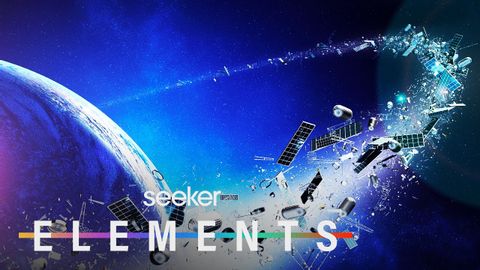未来のミッションを脅かす "宇宙ゴミ"(スペースジャンク)ってなに?
Summer が 2022 年 05 月 11 日 に投稿  この条件に一致する単語はありません
この条件に一致する単語はありませんUS /ˈʌltəmɪtli/
・
UK /ˈʌltɪmətli/
US /əˈprəʊtʃ/
・
UK /ə'prəʊtʃ/
- v.t./i.近づく;話を持ちかける
- n. (c./u.)目的に近づく方法 : 道;交渉しようとして人に近づくこと;取り組み方 : 扱い方
US /səˈner.i.oʊ/
・
UK /sɪˈnɑː.ri.əʊ/
エネルギーを使用
すべての単語を解除
発音・解説・フィルター機能を解除
